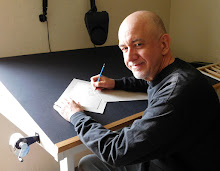
Beebe
Along the south shore of
It’s been interesting to note how much less time and effort I’m putting into taking photos than I would have a few years ago. No tripod, no careful setups, just freehand snaps with the camera on Auto. I haven’t learned how to change its settings yet, mess with exposure, shutter speeds. Seems a good thing to let all that go for now, let the little camera do its thing. Less work, more fun–What’s not to like?
Of course, part of why I’m okay with throttling back on the in-camera thorough is because I can control the post-camera process in a way I never could when I was shooting film and sending it off to be developed and printed. I find I’m treating many of our files as raw material, essentially–Let’s see what we got today, what I can do with this one in Photoshop.
The path continues along
Most of what I’ve done with these photos of Parni’s is subtractive–With Beebe
I’ve always liked panoramas, but never drawn them much. Maybe I’ve needed to explore them in another media; maybe the experience of working with this kind of format digitally will have its effect on whatever happens at the drawing table.
If not, that’s fine too. There are things I want to draw, and things I want to photograph, and they’ve never overlapped much. At the moment, I’m enjoying both media again, and I’m looking forward to our next walk.
Admiring: James Gurney’s plein-air watercolor of Maison d’ Ailleurs, “a museum of science fiction, utopia and extraordinary journeys” in



